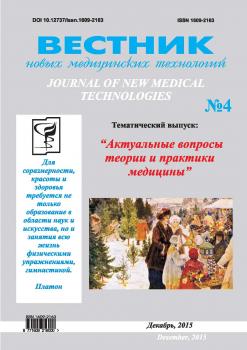Pathology of the central nervous system in children of early age, due mainly hypoxic-ischemic brain damage in the antenatal period and delivery, which occupies a leading place among all factors of perinatal nervous system lesions in infants, is one of the most actual problems of modern medicine. Despite favourable demographic state, the improvement of the quality of perinatal care and medical care of newborns with a weight at birth from 500 grams, the tendency to reduction in the incidence of perinatal lesions of the central nervous system didn’t observed. On the contrary, there is progression of their course, which determines the subsequent mental and physical development of the child - from minimal brain dysfunction and gross motor and intellectual disorders, often resulting in disability. Purpose of the study is to evaluate the clinical features of central nervous system pathology in children of early age by means of neurobiochemistry markers and to develop prognostic criteria for the course and pathogenetic therapy regimens. Materials and methods. Comprehensive survey of 134 children (61 boys and 73 girls ) aged from 0 to 9 months was carried out with the assessment of neurological status and biochemical markers. Results of study. In formation of gravity of perinatal lesions all the studied markers participated, but to a greater extent – the parameters of neurotrophic lesions and endothelial dysfunction. The first component of the nervous tissue of the brain, responding to hypoxia, is microglial environment, which is caused by the growth of lesions S100- protein (i.e., the neuron at the stage of 0-1 months didn’t been metabolic changes – this is evidence of low levels of SOD and MDA).
neurologic status, marker, children
Патология центральной нервной системы (ЦНС) у детей раннего возраста, обусловленная преимущественно гипоксически-ишемическим поражением головного мозга в антенатальном периоде и родах, занимающим лидирующее место среди всех факторов перинатального поражения нервной системы у новорожденных детей, является одной из наиболее актуальных проблем современной медицины. Несмотря на благоприятную демографическую тенденцию, улучшение качества перинатальной помощи и совершенствование медицинской помощи новорожденным детям с массой при рождении от 500 гр на современном этапе не наблюдается тенденции к снижению частоты перинатальных поражений ЦНС [1]. Напротив, отмечается прогредиентность их течения, определяющая последующее нервно-психическое и соматическое развитие ребенка – от минимальной мозговой дисфункции до грубых двигательных и интеллектуальных расстройств, приводящий нередко к его инвалидизации [2,3].
Несмотря на распространенность перинатальных поражений центральной нервной системы среди детей раннего возраста, только 15%-20% из них выявляется впервые дни и недели жизни. Клинические наблюдения показывают, что симптомы повреждения центральной нервной системы на первом году жизни могут проявляться не сразу после рождения, а спустя несколько месяцев и чаще в виде неспецифических симптомокомплексов.
1. Korenovskiy Yu.V., El´chaninova S.A., Fadeeva N.I. Matriksnaya metalloproteinaza-9, superoksiddismutaza i perekisnoe okislenie lipidov u nedonoshennykh novorozhdennykh s perinatal´noy gipoksiey. Byulleten´ sibirskoy meditsiny. 2011. №2. S. 26-30
2. Saha R.N., Liu X., Pahan K. Up-regulation of BDNF in astrocytes by TNF-alpha: a case for the neuroprotective role of cytokine. J Neuroimmune Pharmacol. 2006. №1. P. 212-222.
3. Gruber H., Hoelscher G., Bethea S., Hanley E. Jr. Interleukin 1-beta upregulates brain-derived neurotrophic factor, neurotrophin 3 and neuropilin 2 gene expression and NGF production in annulus cells. Biotechnic Histochem. Epub 2012 Aug 3.
4. Romanic A.M., White R.F., Arleth A.J. et al. Matrix metallo-proteinase expression increases after cerebral focal ischemia in rats: inhibition of matrix metalloproteinase-9 reduces in-farct size. Stroke. 1998. V. 29. P. 1020-1030.
5. Wong F.Y., Barfield C.P., Walker A.M. Power spectral analysis of two-channel EEG in hypoxiceischaemic encephalopathy. Early Hum Dev 2007. V. 83. P. 379-383.
6. Kireev S.S., Larchenko V.I. Tserebral´naya gemodinamika i vozmozhnosti ee optimizatsii pri kriticheskikh sostoyaniyakh u novorozhdennykh v usloviyakh otdeleniya reanimatsii. Neonatologiya, khirurgiya ta perinatal´na meditsina. 2011. T. 1. №2. S. 51-55.





